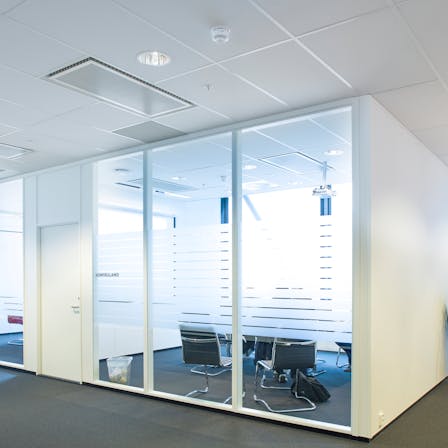Why can't I use the ceiling to block sound through the plenum?
The short answer is because suspended, acoustic ceilings are for sound absorption. They are not good at blocking sound transfer. They are very porous and lightweight.
Compare a sheet of gypsum board (drywall) used in partitions to a ceiling panel. The gypsum board is much heavier. We paint walls, sealing up any pores. Partitions are constructed of at least two, and sometimes up to four, layers of gypsum board. The ceiling panel is just no match.
Most ceiling panels have sound blocking capacities (Ceiling Attenuation Class, where the sound passes through the ceilings in both rooms) of only 20 to 35 points, which is 10 to 25 points less than what is required by standards for sound privacy between offices.
Please remember that the ceiling panel's sound blocking capacity is based on the panel alone. It does not account for the fact that we then penetrate the ceiling with lighting, air devices, speakers, etc. causing significant noise leaks.
Research shows that adding these penetrations can decrease the overall ceiling system's sound-blocking capacity by up to 10 points. This means that a ceiling system's performance can be 25 even though the ceiling panel is rated at 35. That 10-point decrease roughly means that the noise coming through the ceiling is twice as loud as without the penetrations and four times as loud as the sound coming through the wall. Ceilings are for sound absorption.








